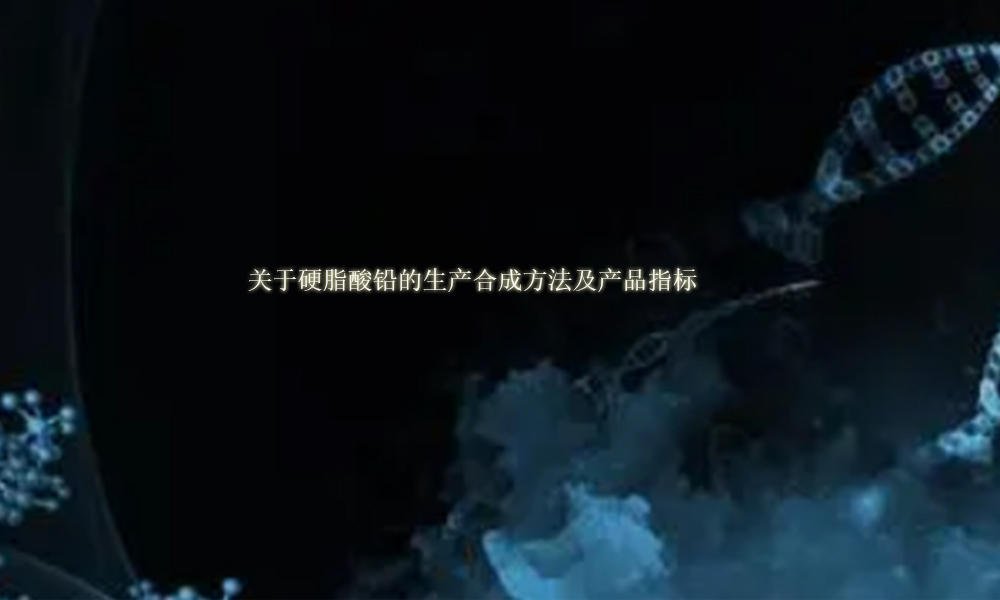
It is understood that lead stearate is in the form of white to yellow powder, with a relative density of 11 323 (25°C), a melting point of 105~112°C, and has heat resistance and Creamy feel. Insoluble in water, soluble in hot ethanol and ether, soluble in alkali, kerosene and turpentine. When encountering strong acid, it decomposes into stearic acid and corresponding lead salts. In oilfield chemicals, it is used as a lubricating sticking agent and a defoaming agent for drilling fluids. It is also used as a paint anti-sedimentant, fabric water-releasing agent, lubricating oil thickening agent, plastic heat-resistant stabilizer, etc., and as a stabilizer for opaque soft and hard polyvinyl chloride products.
1. The production and synthesis method of lead stearate is as follows:
(1). Adopt metathesis method. First dissolve stearic acid in hot water 20 times its weight, and add caustic soda with a concentration of 10 Baume at around 90°C to generate a dilute soap solution. Then, lead nitrate solution is added at the same temperature for metathesis. The resulting stearic acid precipitate is washed with water, centrifuged and dehydrated, and then dried at about 100°C to obtain the finished product. Raw material consumption quota: stearic acid (acid value 198-205, iodine value <4) 740kg/t, caustic soda (30%) 370kg/t, lead acetate (98%) 540kg/t.
(2). Mix and stir the calculated amount of the ethanol solution of stearic acid and the aqueous solution of lead acetate to precipitate the lead stearate soap, and wash it with water until no free lead ions exist. Separate the precipitate by suction filtration, dry it and recrystallize it with toluene or 95% ethanol. The obtained product is dried in an oven at 80°C to a constant weight.
(3). After adding stearic acid to the reaction kettle to melt, add sodium hydroxide solution, stir the reaction, generate sodium stearate saponification liquid, then add dilute lead acetate solution, continue stirring the reaction, Lead stearate powder can be obtained by discharging, dehydrating, drying, crushing and sieving.
2. The product indicators of lead stearate are as follows:
(1) First-class product appearance: white powder; moisture ≤ 1.0%; free acid (Based on stearic acid) ≤1.0%; melting point 103~110℃; lead content 27.0~28.5%; fineness (passed through 200 mesh sieve) ≥98.0%; the total number of particles shall not exceed 6, and the medium φ0.3~ No more than 2 grains for 0.6mm.
(2) Second-grade product: slightly yellow powder in appearance; moisture ≤ 2.0%; free acid (calculated as stearic acid) ≤ 1.5%; melting point 98~110%; lead content 26.0~29.0; fine Degree (passed through 200 mesh sieve) ≥95.0%; the total number of particles shall not exceed 12, of which no more than 4 shall be φ0.3~0.6mm.

 微信扫一扫打赏
微信扫一扫打赏

